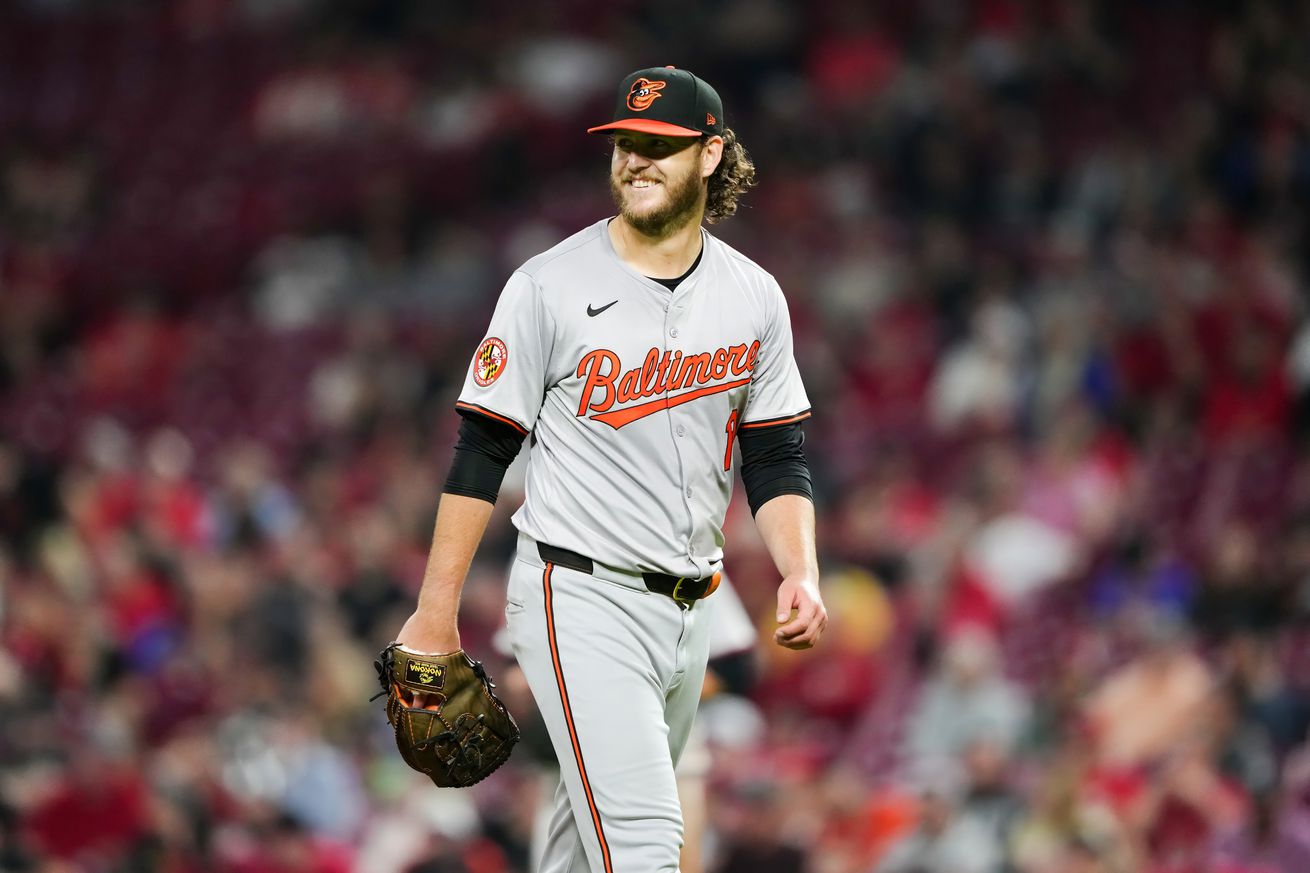
The veteran lefty has moved to the bullpen for the time being, but it’s not due to a lack of success.
Life isn’t always fair. That’s a lesson that everyone has to learn growing up, and it applies to Major League Baseball roster decisions as well. Cole Irvin was the victim of that reality over the weekend as he was relegated to bullpen duty following the activation of Grayson Rodriguez off of the injured list.
It’s likely that the Orioles were always planning for Irvin to shift into a bullpen role at some point this season. After all, a fully healthy rotation of Rodriguez, Corbin Burnes, Kyle Bradish, Dean Kremer, and John Means is a tough one to crack. But up until this past weekend at least one of the aforementioned had been ailing with something since February.
The decision to “demote” Irvin to the bullpen was not made easy by the 30-year-old’s performance. Over seven starts this season, he owned a 2.90 ERA/3.40 FIP and had held opponents to a .613 OPS. That even includes his first two starts of the season in which he allowed nine earned runs over 10 innings. Since mid-April, he has been terrific, at one point making three consecutive scoreless starts over 20 total innings.
It has been a rather simple formula for Irvin to this point. He’s limiting walks. That keeps his mistakes from compounding, which is important because the lefty still gives up plenty of hard contact. But much of it is on the ground. His current 48.4% ground ball rate is the highest of his career.
The pitch mix is also new for Irvin. He has been challenging hitters with far more curveballs than ever before. It now accounts for 28.5% of all his offerings. But he still has the other pitches (four-seam, sinker, change, cutter) to keep the opposition off balance. Irvin is never trying to blow hitters away. His whiff rate is near the bottom of the league, and he is striking out just 5.95 hitters per nine innings. But he does give them a ton of looks and limits his own unforced errors.
Irvin’s move to the bullpen is, for now, just temporary. O’s manager Brandon Hyde explained this week that the team is going to move to a six-man rotation as they navigate a heavy portion of their schedule in which they play 43 games in 45 days. Irvin will be part of that starting set-up, which should give him another month’s worth of action to prove he belongs in the rotation long-term.
While that’s not an impossible case to make, it’s going to be tough, barring another injury to someone in the crew. Burnes and Bradish have already proven they can compete for a Cy Young. Rodriguez looks like the ace-in-waiting. Means is pitching like the 2021 version of himself, fully healthy and competitive. And Kremer is a gamer that has been a steadying force for the Orioles in each of the last two seasons. That is a lot for Irvin to overcome.
A hybrid role for Irvin in which he bounces between the rotation and the bullpen could be perfect. It allows the Orioles to put him in positions to succeed, possibly matching him up against favorable lineups or in a ballpark that may play to his strengths. And it’s essentially the role that Irvin played from June on last year when he was recalled from Triple-A. Over those final 64.1 innings he had a 3.22 ERA, compared to a 10.38 ERA when he was sent down (for the second time) on May 20.
It is not entirely dissimilar to what the team has employed in its daily lineup. Mainstays like Adley Rutschman, Gunnar Henderson, and Jordan Westburg are etched into the Hyde’s starting nine each game, but many of the names around them move depending on the day. That has allowed players like Ryan O’Hearn and Jorge Mateo to thrive in platoon roles. Austin Hays could be the next to bounce back as they feature him when it suits him.
That method of roster construction is a luxury that not every team can enjoy, but the 2024 Orioles are in a position to do so. It’s hard to argue with the results so far, although you can imagine Irvin wants a more steady role, particularly against the backdrop of his successes so far this year.
It’s cliché, but Irvin isn’t only pitching for the Orioles every time out. There are 29 other organizations out there that could be interested in his services one day. The late-blooming veteran isn’t due to hit free agency until after the 2026 season. But that doesn’t mean he will stay with the Orioles until then.
Just as the O’s contacted the Athletics ahead of the 2023 season in search of a controllable arm with league average upside, other clubs could have the same interest in Irvin moving forward. The Orioles likely won’t be interested in trading him in-season as he feels like an important cog in this version of the pitching machine. But as the summer goes on, developments are made in the minors, they could see someone else that fits the role even better in 2025 and look to capitalize on Irvin’s work.
That could be a win-win for all involved, and it would be a testament to the sorts of strides Irvin has been these last two seasons. It may go under the radar at times, but it is not unnoticed by a large swatch of the fanbase.
